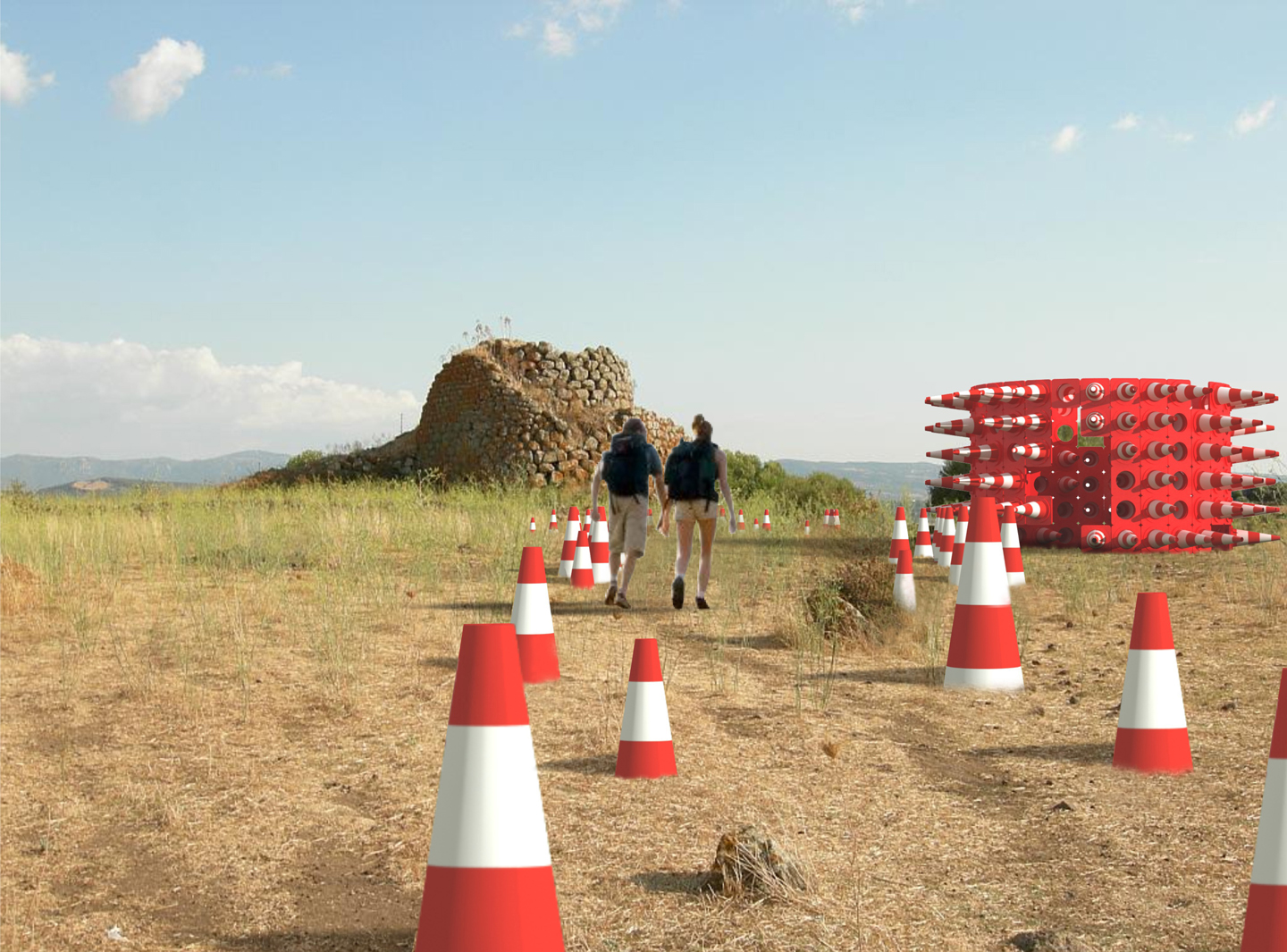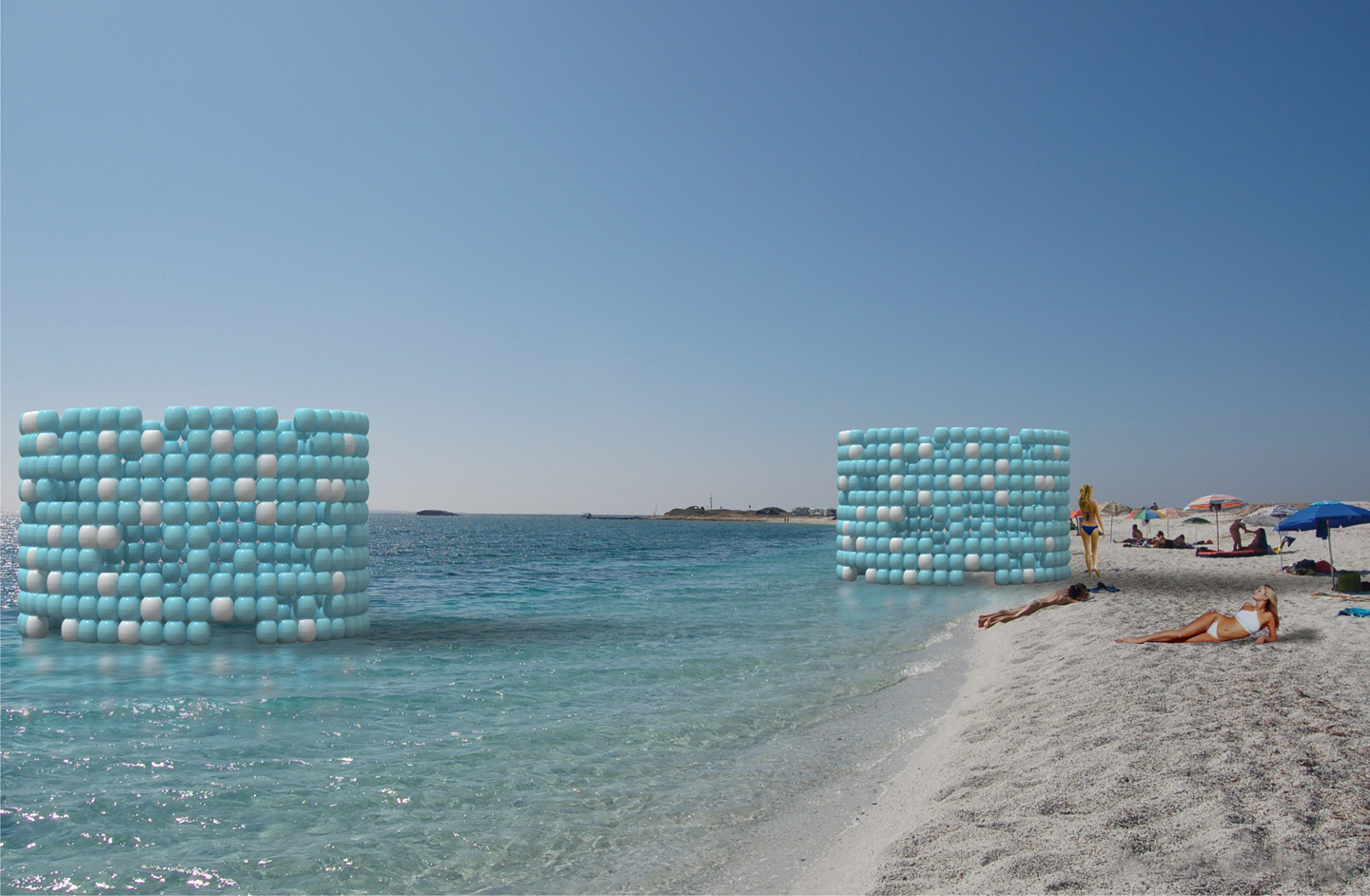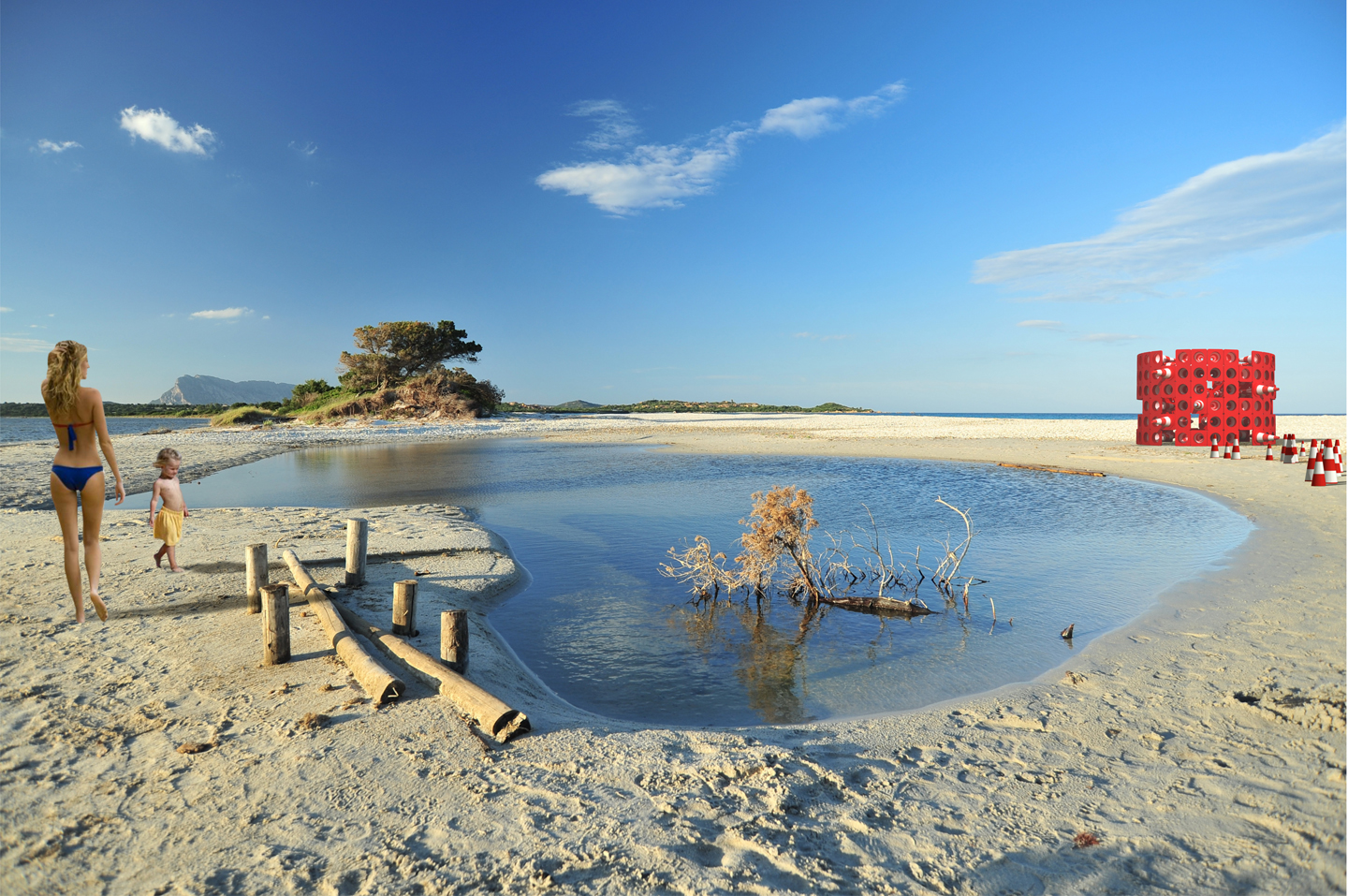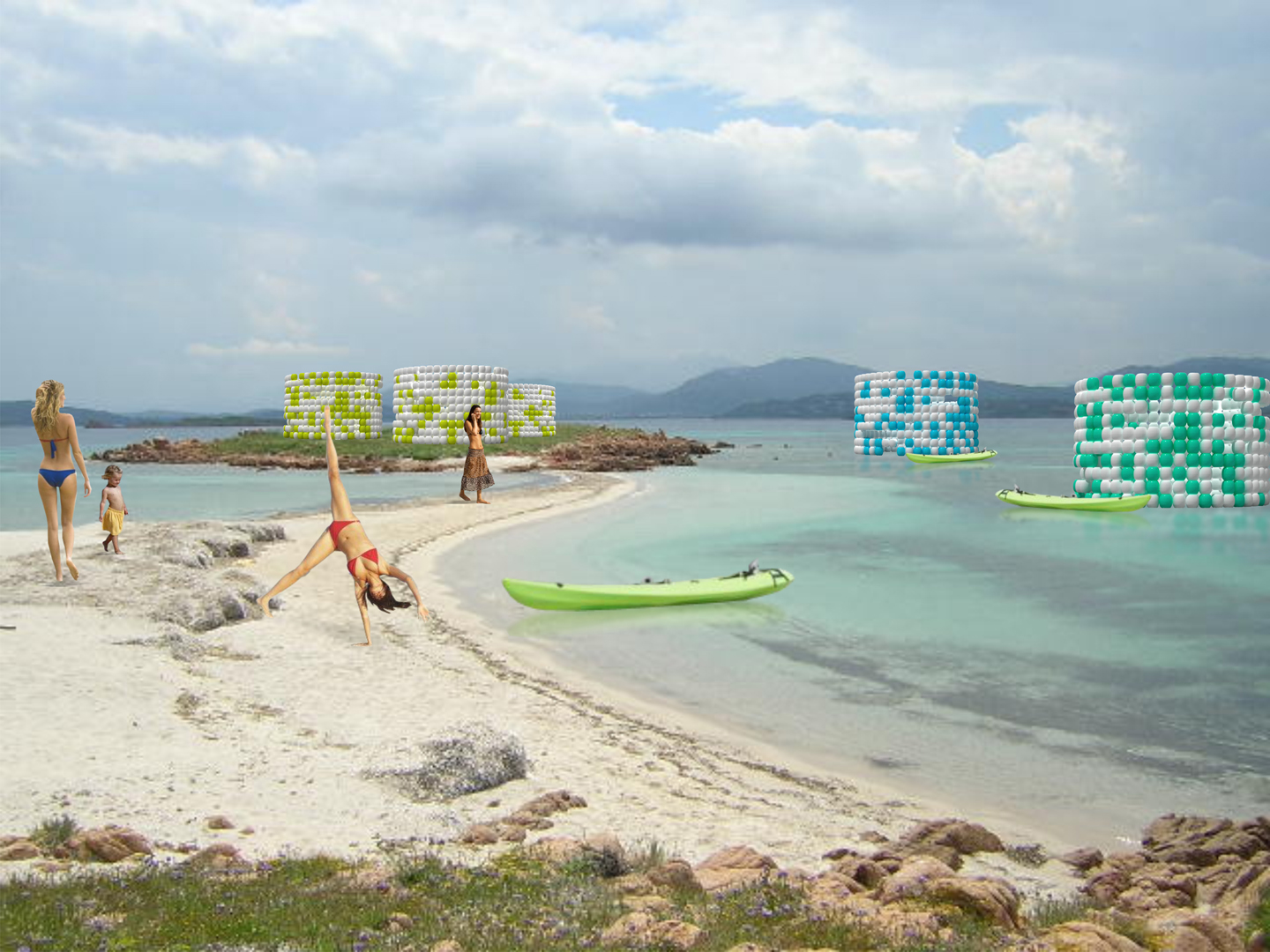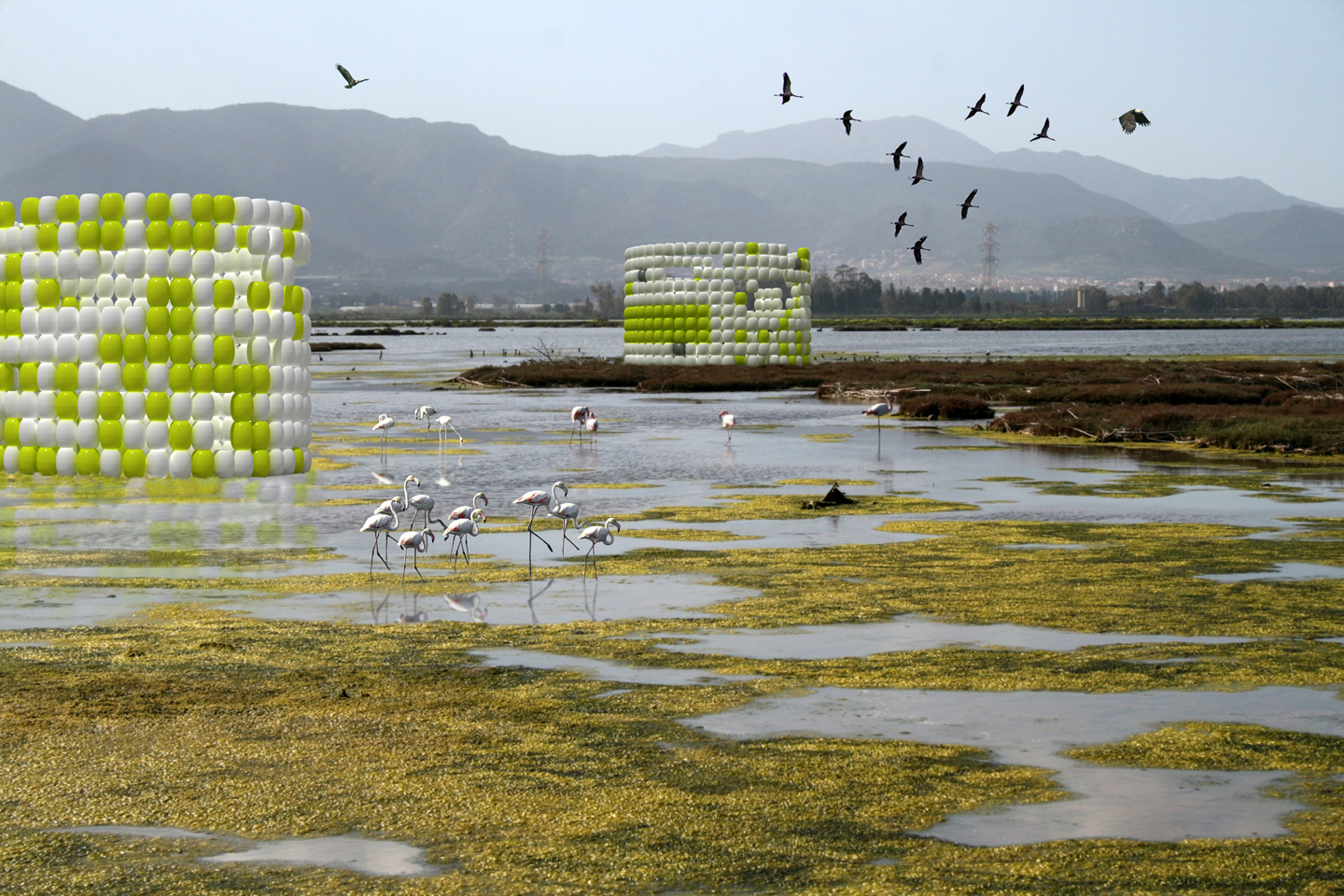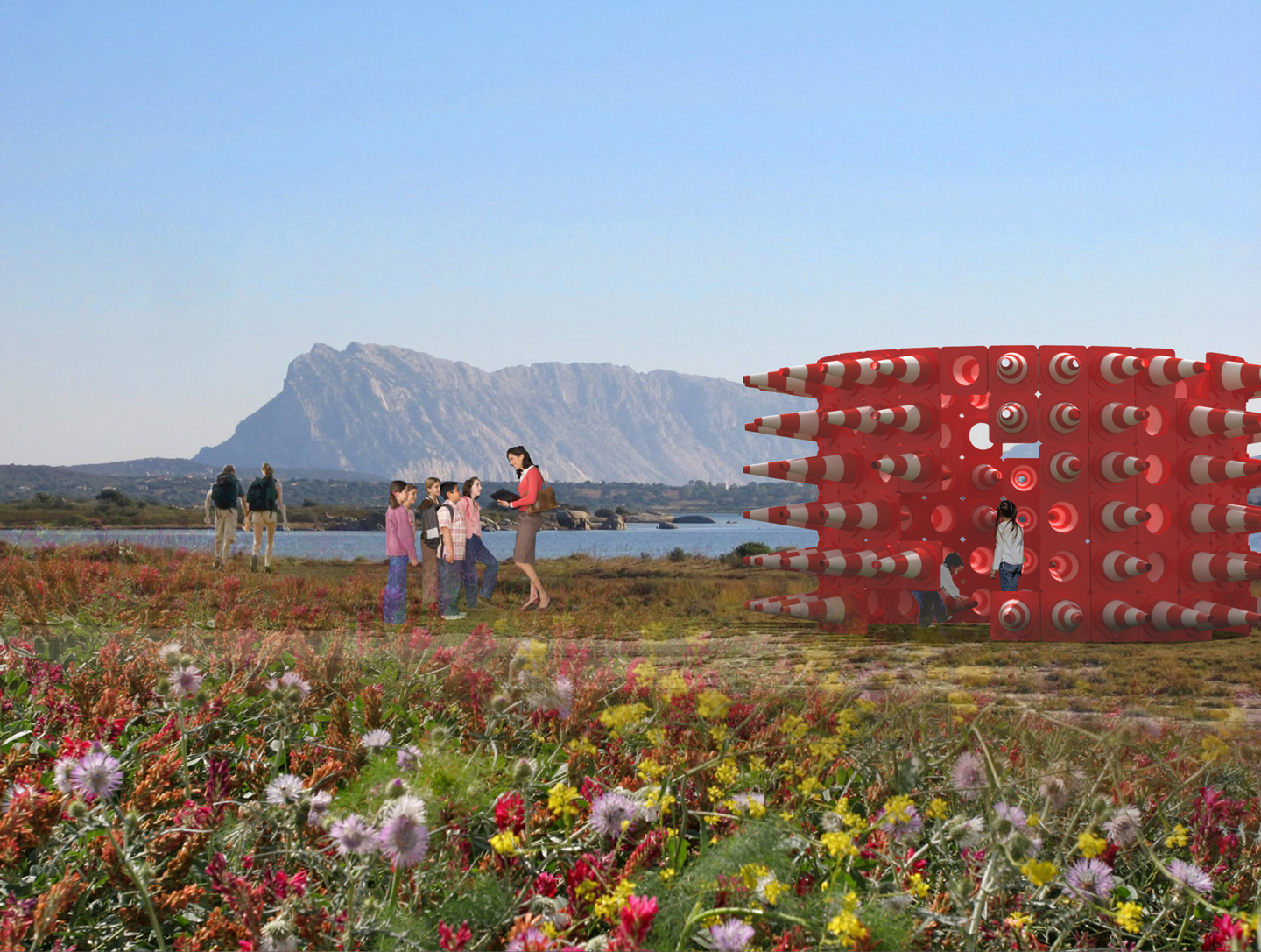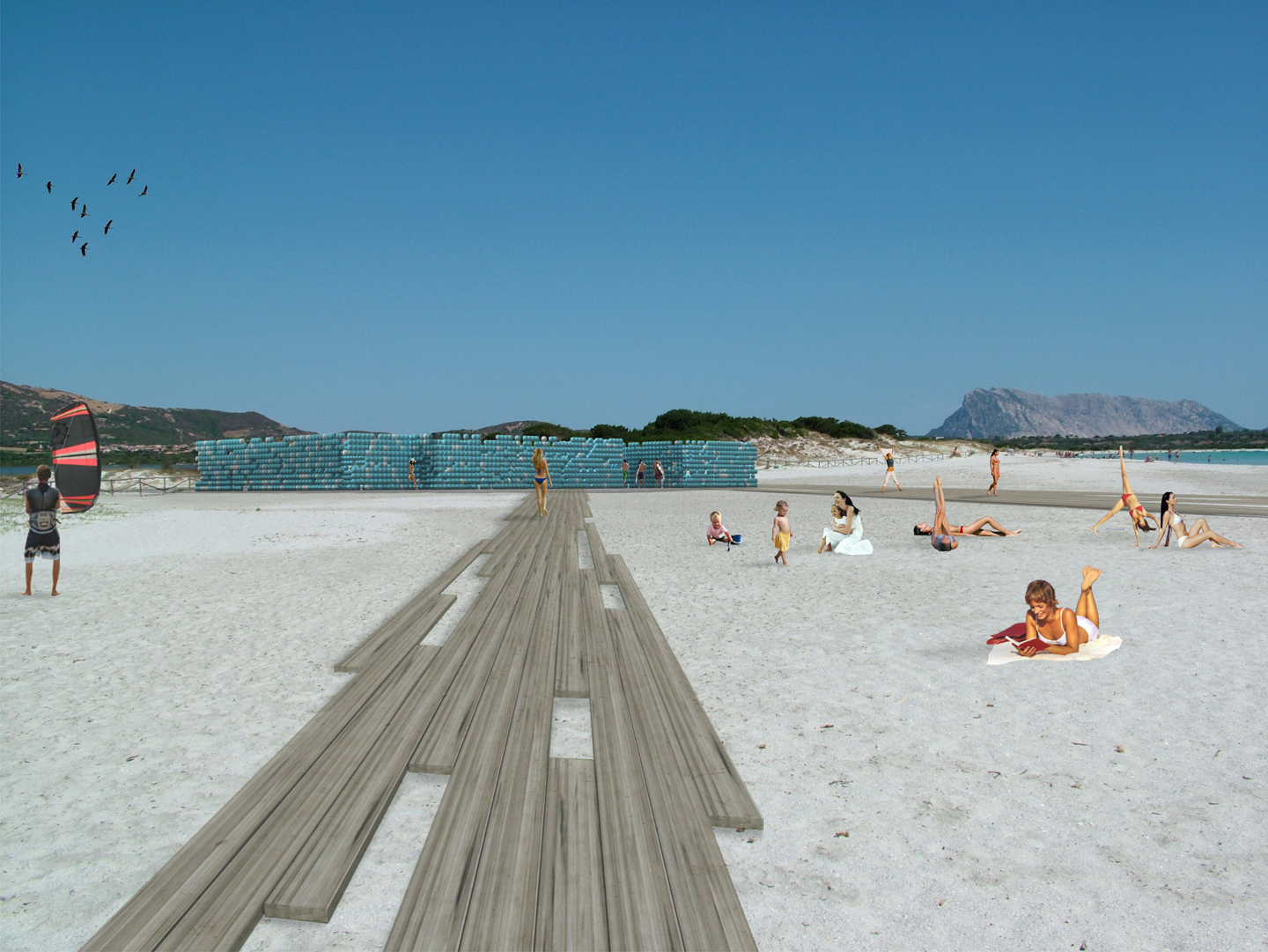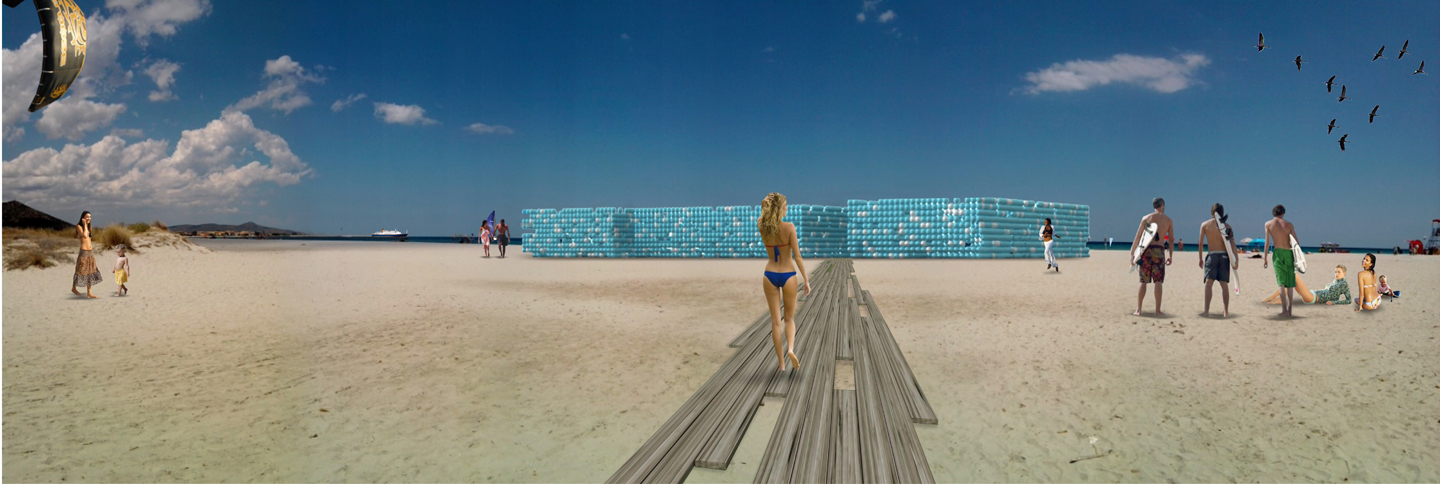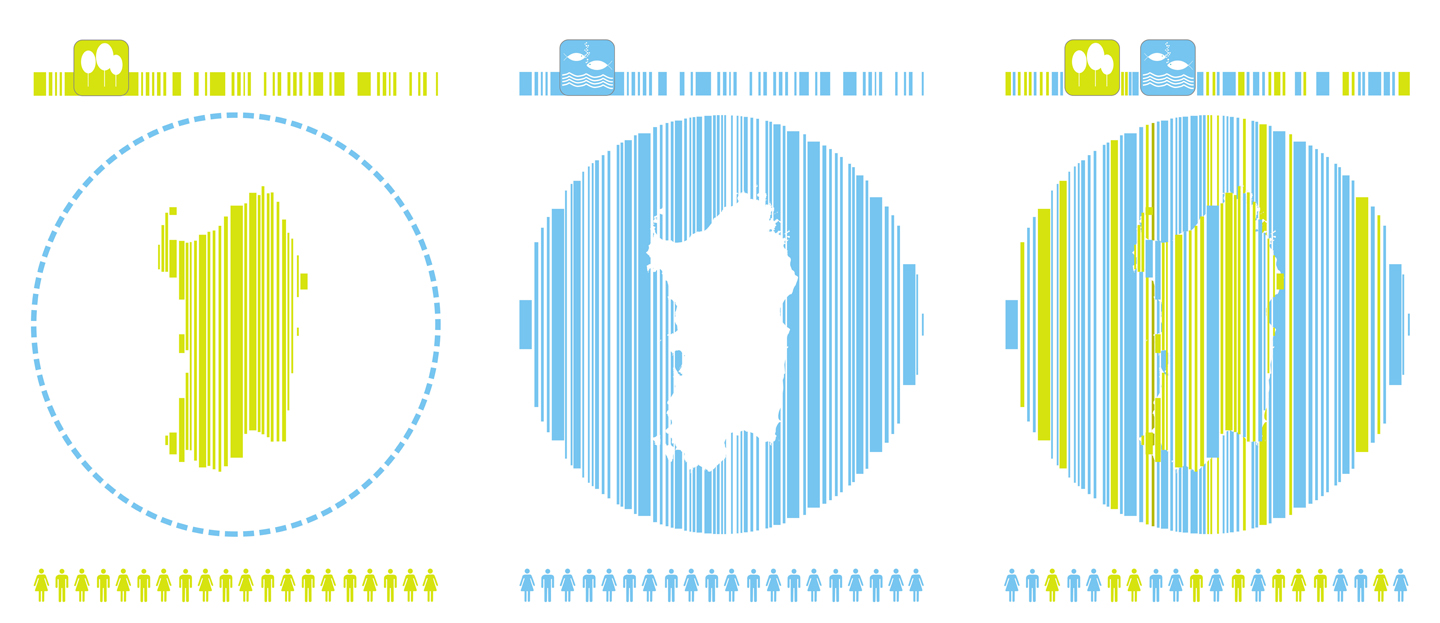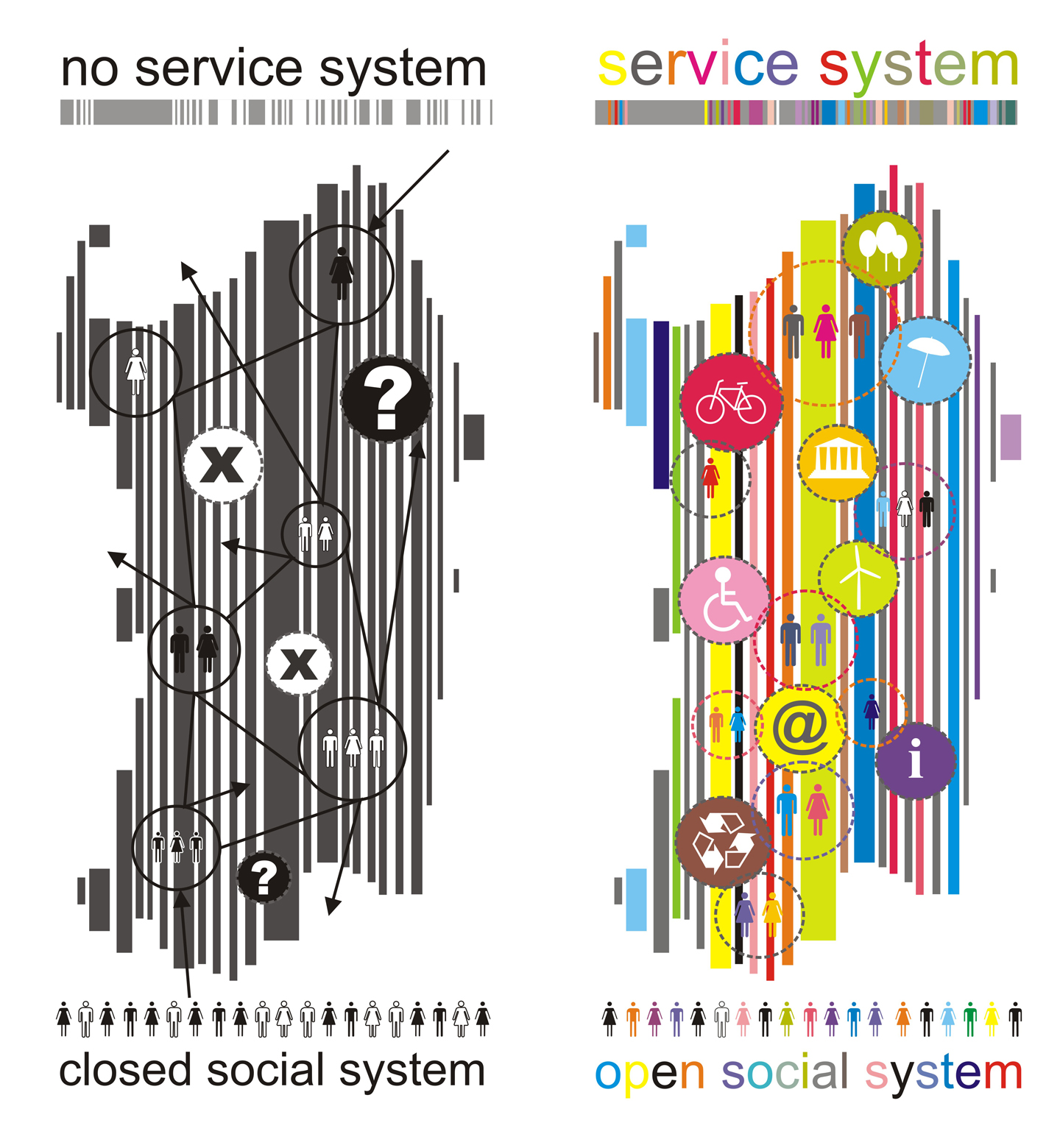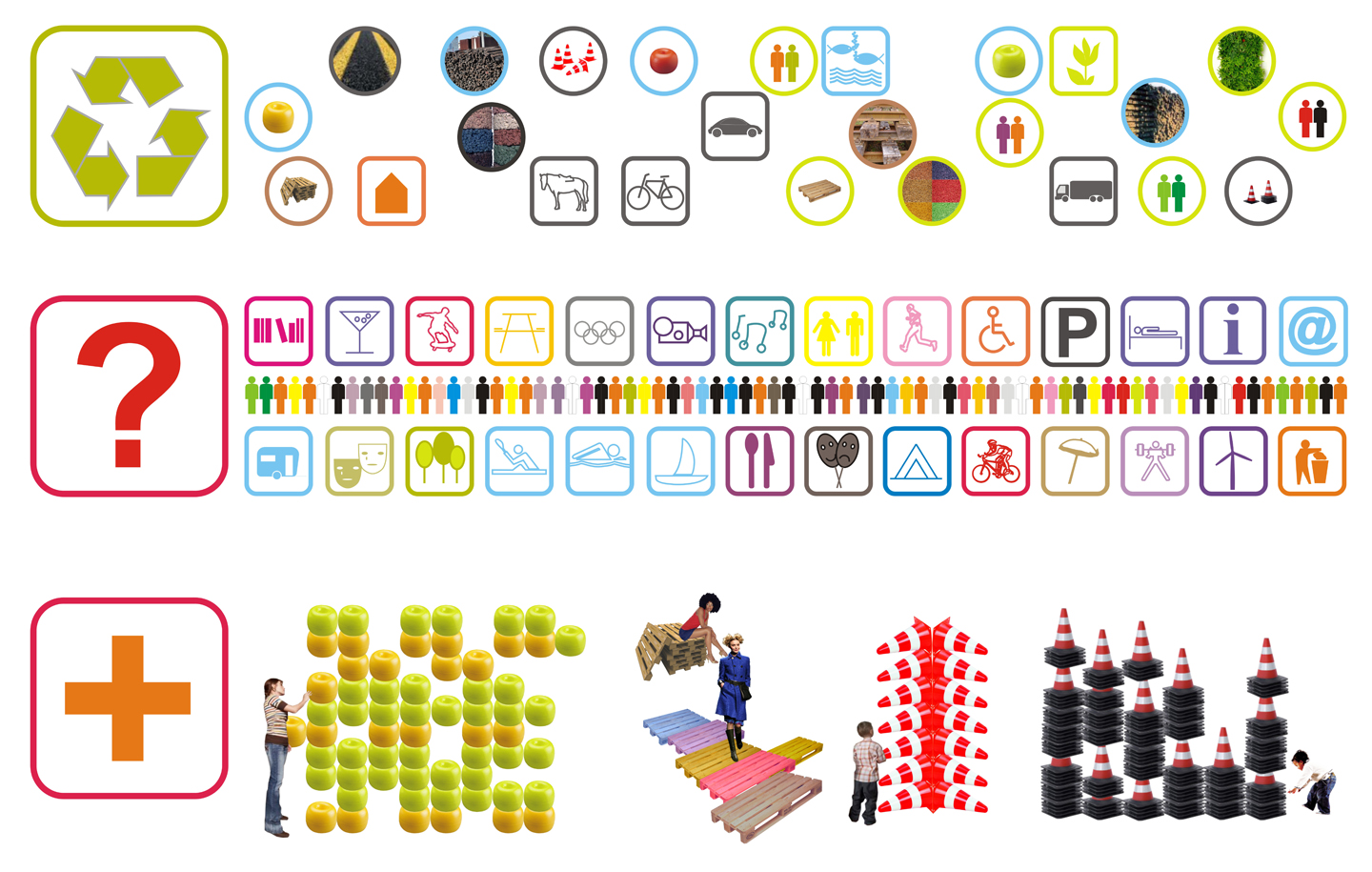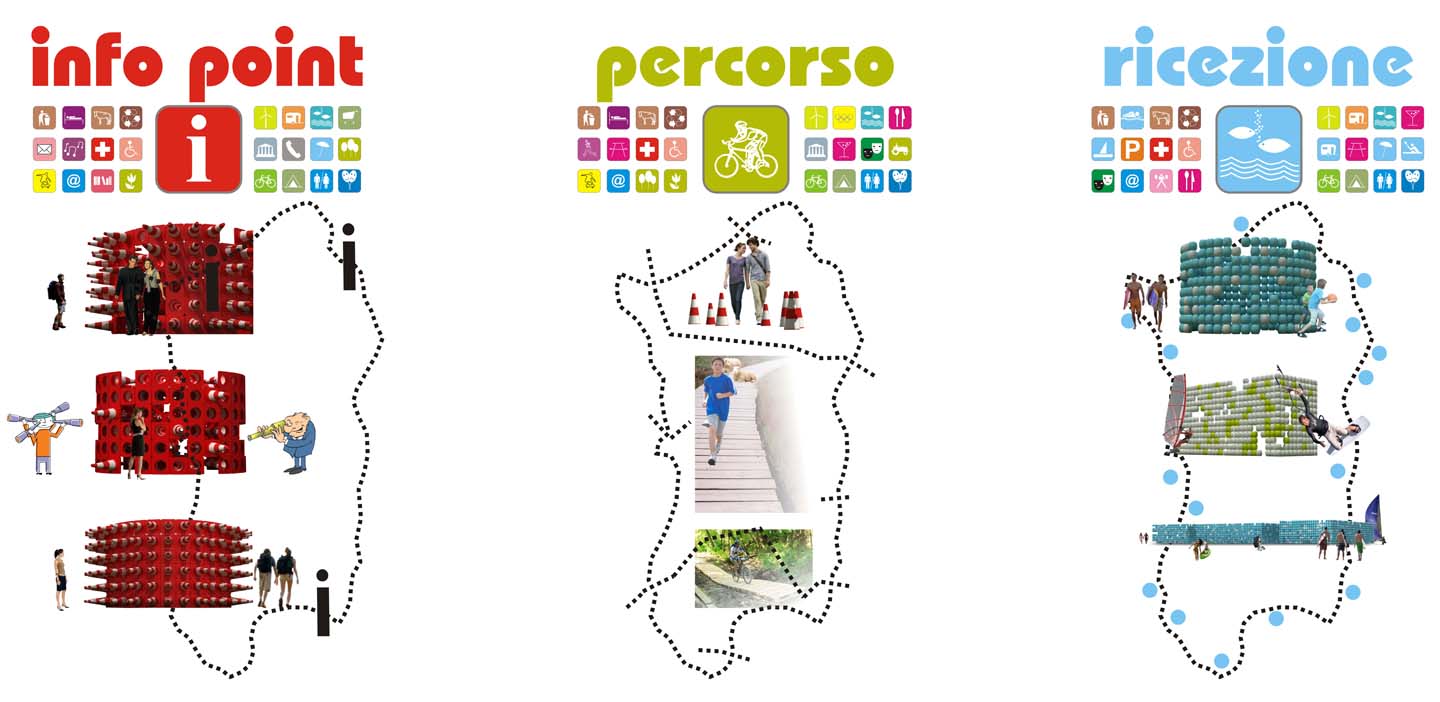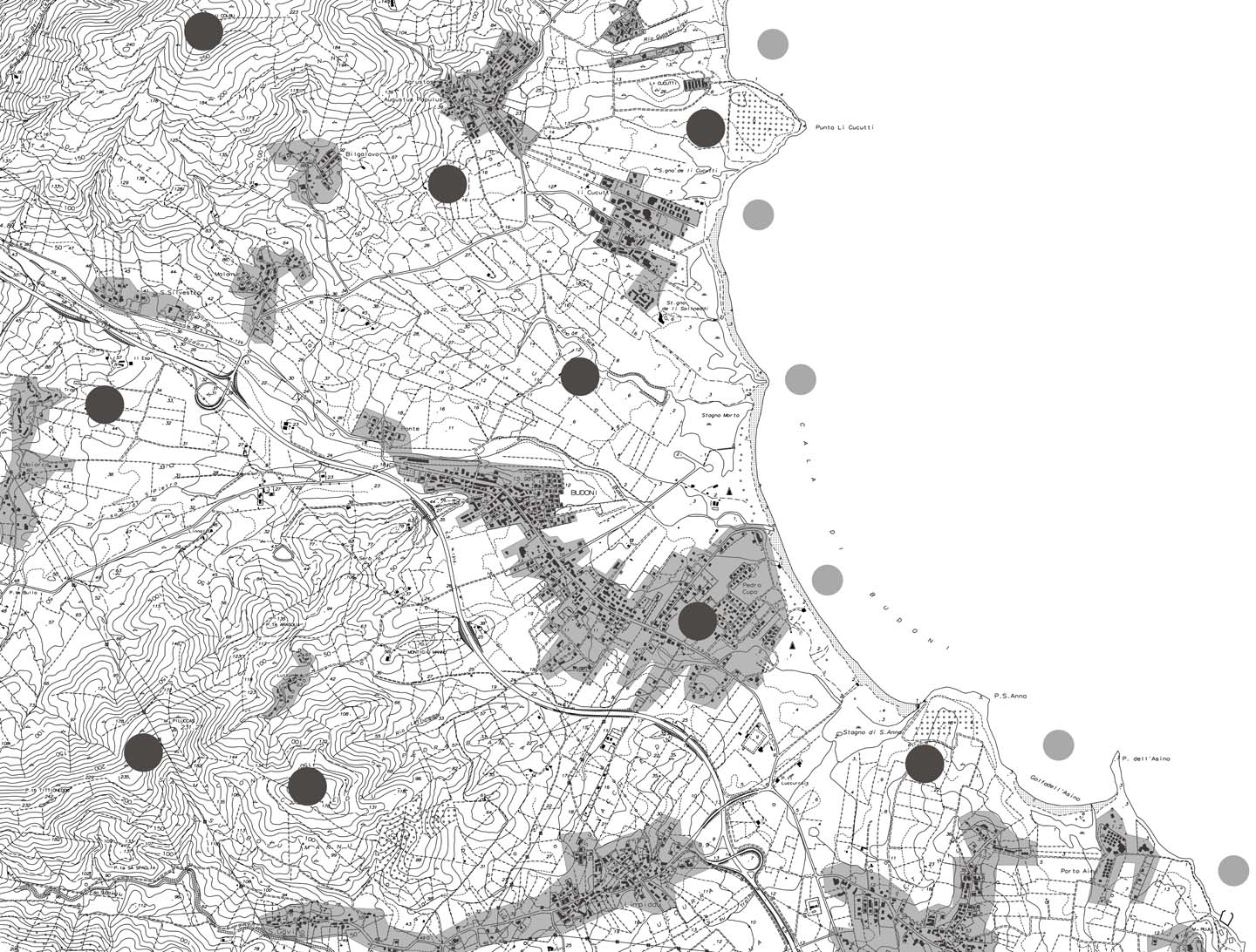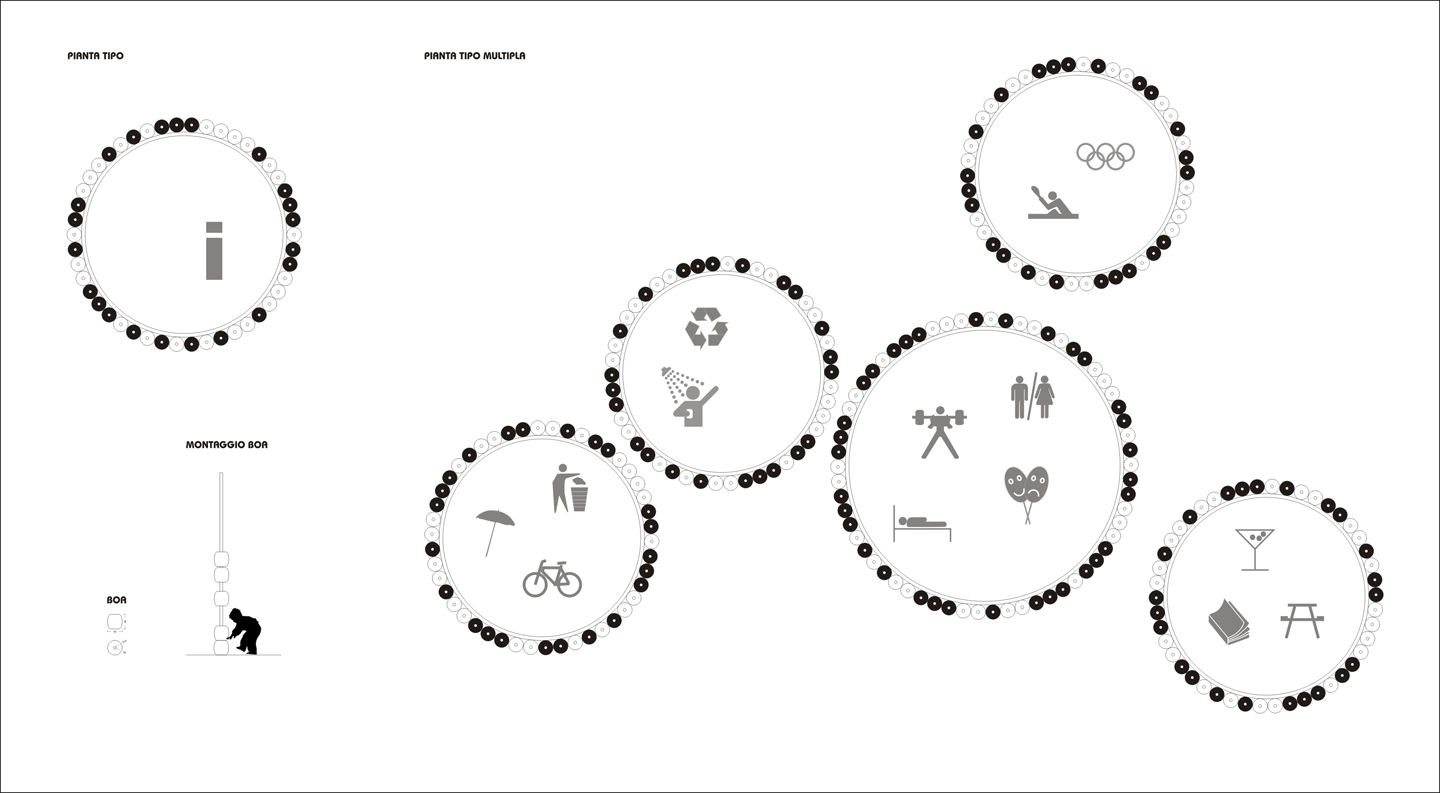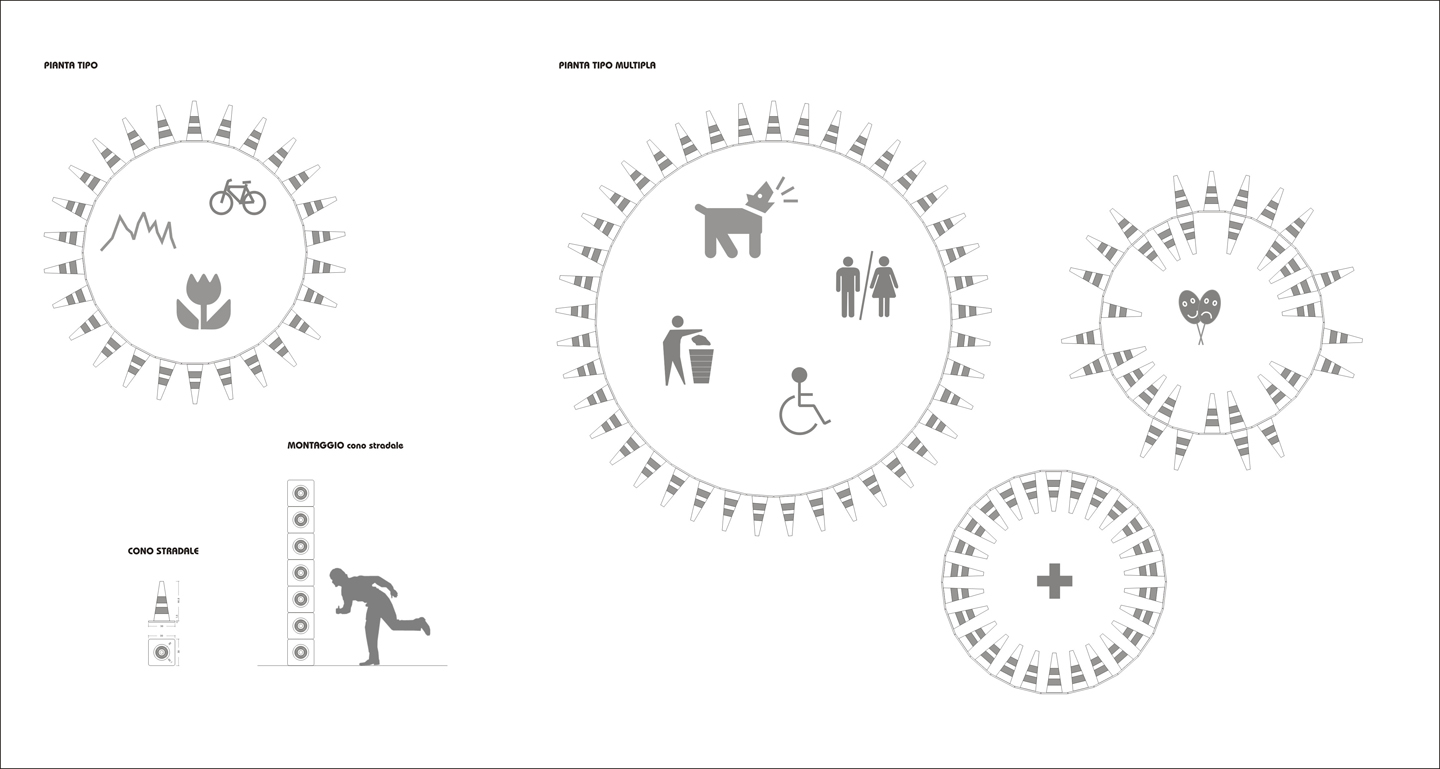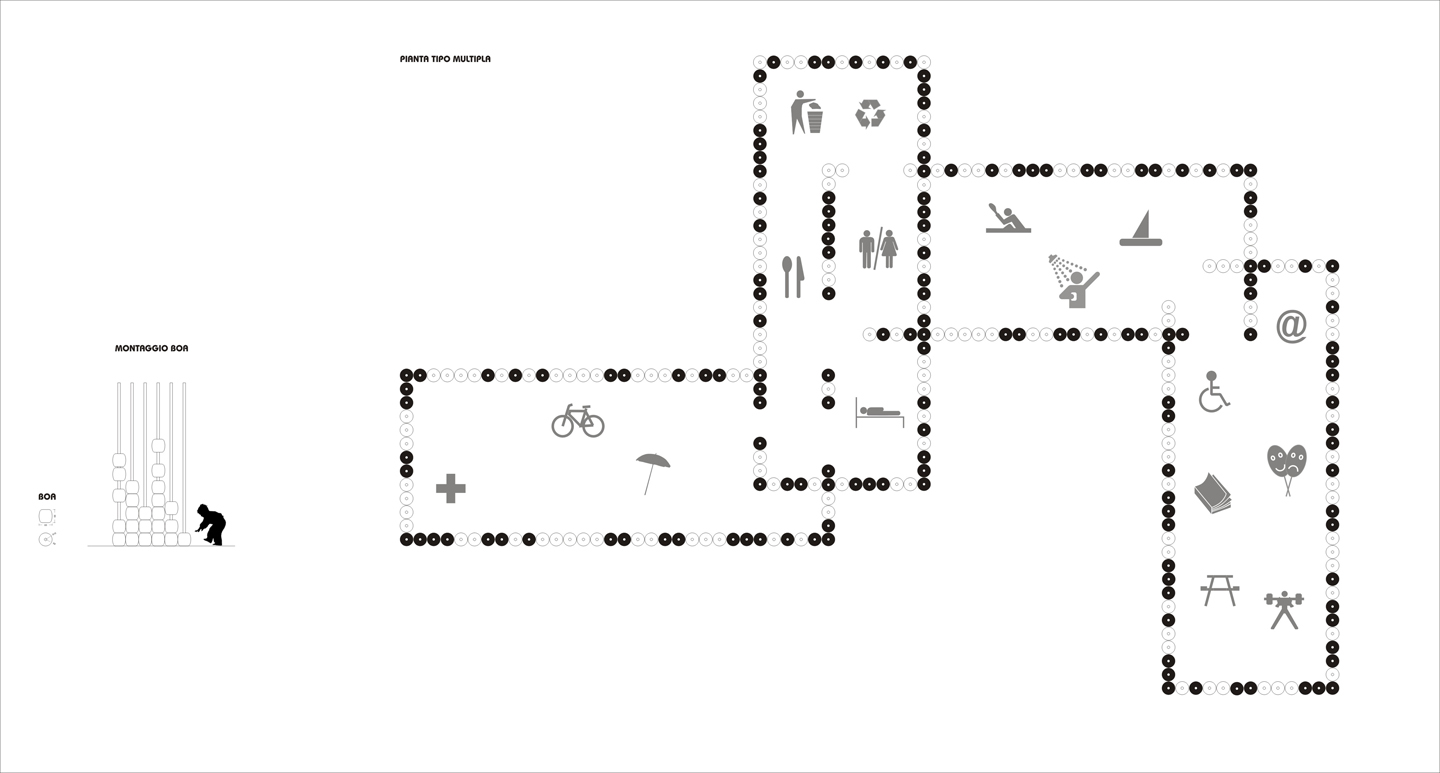LIQUID LANDSCAPES
Project by FuGa_ Officina dell’Architettura
Architect Francesco Ursitti
Public Space, Turistic Services
International competition, Budoni (OT), Italy, 2013
The project aims at promoting the redevelopment of the Sardinian territory through a structured building of vectors among the outland plains toward the inland, and from the mountains and inland areas toward the seaside resources, such as dumpy areas, beaches and maritime surfaces.
These landscapes mirror a temporary, hybrid, complex and corrupted condition of an instable, uncertain, but also a dominant, socio-political reality.
Fluid landscapes can help introduce functional varieties and organic biodiversities into the historical matrix of places.
Here planetary energies of transformation flow and dominate.
New places, uses and matter consolidate public policies as metaphor for new social tanks.
New models of territorial, economic and social development govern the contemporary landscape as well as its historical, technological and artistic footprints.
In this way the kaleidoscopic figure of the territory can look at an evolution and overlapped landscapes that seem to penetrate each other in a new geography, based on endless inclines and strong imperfections.
Architecture is at the core of this metamorphosis, undergoing the repercussion of its own nature, directed more towards a definitive solution rather than the absence of definitive edges.
The projects respond to a globalized dimension and the elimination of severe, traditional connotations offering fluid, dynamic, and elastic among spaces and assets.
This is a temporary project; a light and liquid infrastructure capable of intertwining relationships.
It is a self-made project, consistent, made of articulated structures that creep into waste spaces and, temporarily, occupy places and time.
It is about a project where the same society does what needs to be done, involving drawing, materials, environment and technology.
The project transforms the goods, consumes them and reformulates their function.
There is creativity and imagination for a pragmatic use of shapes, spaces between harmony, emotion and social nature.
Wonderful architecture awakes our past experience and future ability to adapt.
Naturalized architectures articulate the aesthetics of waste with an urban ecology capable of rethinking our present life in a useful way.
Of these two elements, two objects are in the running: the buoy and the road sign cone……



